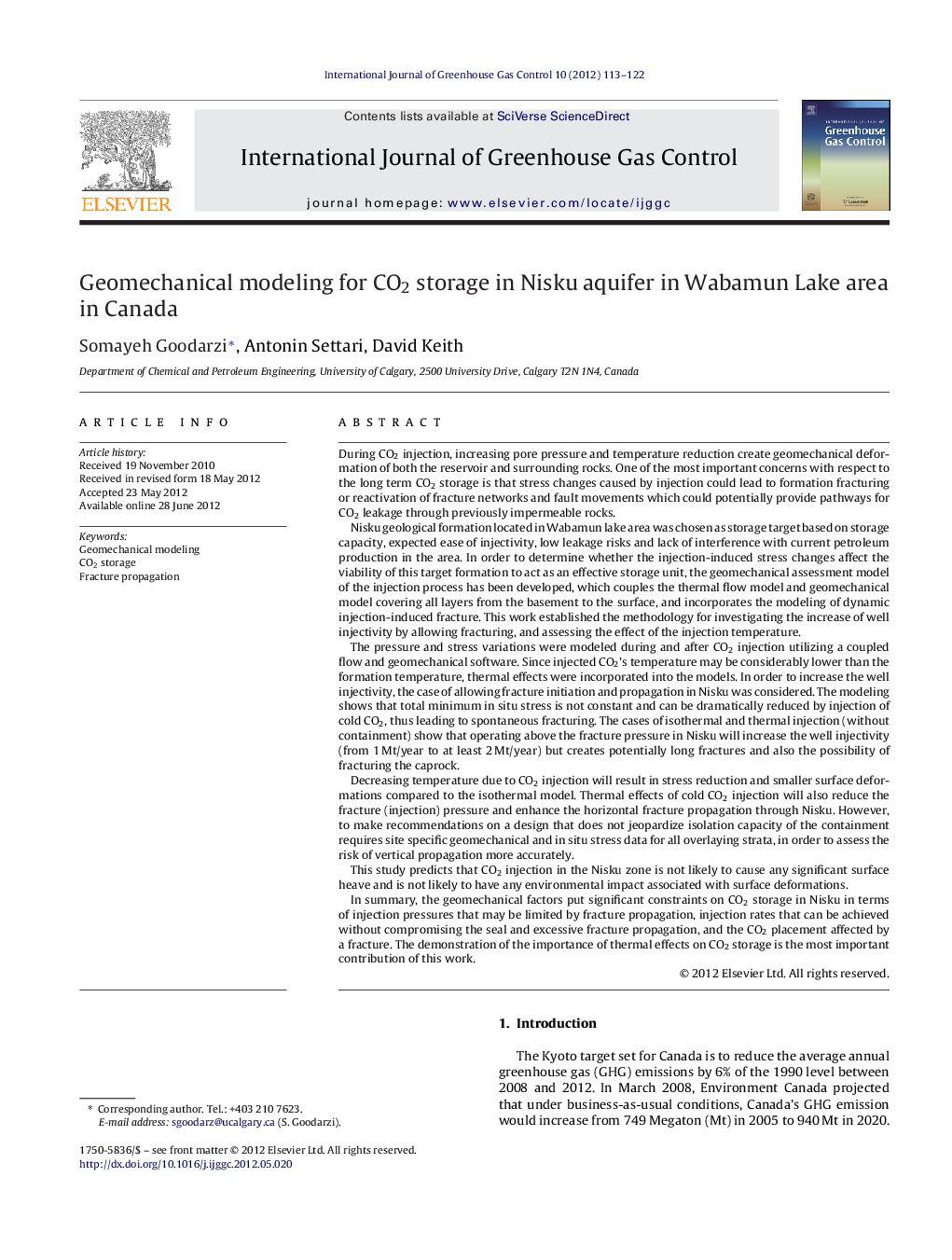| کد مقاله | کد نشریه | سال انتشار | مقاله انگلیسی | نسخه تمام متن |
|---|---|---|---|---|
| 1743293 | 1522013 | 2012 | 10 صفحه PDF | دانلود رایگان |

During CO2 injection, increasing pore pressure and temperature reduction create geomechanical deformation of both the reservoir and surrounding rocks. One of the most important concerns with respect to the long term CO2 storage is that stress changes caused by injection could lead to formation fracturing or reactivation of fracture networks and fault movements which could potentially provide pathways for CO2 leakage through previously impermeable rocks.Nisku geological formation located in Wabamun lake area was chosen as storage target based on storage capacity, expected ease of injectivity, low leakage risks and lack of interference with current petroleum production in the area. In order to determine whether the injection-induced stress changes affect the viability of this target formation to act as an effective storage unit, the geomechanical assessment model of the injection process has been developed, which couples the thermal flow model and geomechanical model covering all layers from the basement to the surface, and incorporates the modeling of dynamic injection-induced fracture. This work established the methodology for investigating the increase of well injectivity by allowing fracturing, and assessing the effect of the injection temperature.The pressure and stress variations were modeled during and after CO2 injection utilizing a coupled flow and geomechanical software. Since injected CO2's temperature may be considerably lower than the formation temperature, thermal effects were incorporated into the models. In order to increase the well injectivity, the case of allowing fracture initiation and propagation in Nisku was considered. The modeling shows that total minimum in situ stress is not constant and can be dramatically reduced by injection of cold CO2, thus leading to spontaneous fracturing. The cases of isothermal and thermal injection (without containment) show that operating above the fracture pressure in Nisku will increase the well injectivity (from 1 Mt/year to at least 2 Mt/year) but creates potentially long fractures and also the possibility of fracturing the caprock.Decreasing temperature due to CO2 injection will result in stress reduction and smaller surface deformations compared to the isothermal model. Thermal effects of cold CO2 injection will also reduce the fracture (injection) pressure and enhance the horizontal fracture propagation through Nisku. However, to make recommendations on a design that does not jeopardize isolation capacity of the containment requires site specific geomechanical and in situ stress data for all overlaying strata, in order to assess the risk of vertical propagation more accurately.This study predicts that CO2 injection in the Nisku zone is not likely to cause any significant surface heave and is not likely to have any environmental impact associated with surface deformations.In summary, the geomechanical factors put significant constraints on CO2 storage in Nisku in terms of injection pressures that may be limited by fracture propagation, injection rates that can be achieved without compromising the seal and excessive fracture propagation, and the CO2 placement affected by a fracture. The demonstration of the importance of thermal effects on CO2 storage is the most important contribution of this work.
Journal: International Journal of Greenhouse Gas Control - Volume 10, September 2012, Pages 113–122